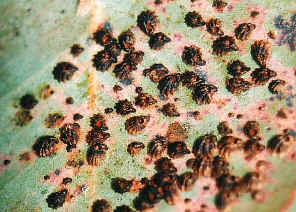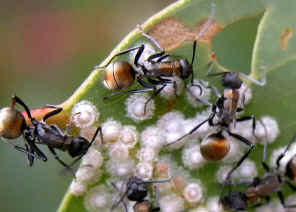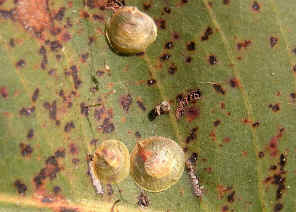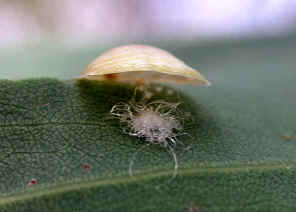|
|
Lerps Insects
Family Psyllidae
Lerps insects are close relatives of Scale Insects. Like Scale Insects, they are sap suckers and often aggregate in colonies. They insert their stylets, or mouthparts, into the plant and begin feeding and constructing a lerp, the protection cover. Lerps are formed from the honeydew excreted by the insects. The honeydew hardens on contact with air to form the protection. Lerps vary in size and shape. Each species has its own characteristic. They can be cones, univalves, bivalves or fan shapes.
- Shell Lerps Insects
-


- Spondyliaspis plicatuloides, diameter 2-3mm
- This Lerps Insects form shell shaped scale protection. They can be found on bottom side of Gum tree leaves.
- White Lerps Insect, Plant Lice


- Glycaspis sp., diameter 3-4mm
- The white materials on gum leaves, known as lerps, are the coverings of insect nymphs that live and feed underneath. The insects suck the plant sap and use the excess starch to make those lerps. There are also the excess sugar, or the honey dews, that make the ants like to attend for them. This White Lerps Insects can easily be found on Gum tree leaves in Brisbane. More information and pictures please click on here.
- White Fibrous Lerps Insect


- Glycaspis sp., diameter 6mm
- The nymphs live and feed beneath the lerp and are protected by the lerps. The lerps are made from starch, derived from the plant sap. The adults looking like a small treehopper, are without lerps. They have the strong hind legs, they can jump and fly. Click here for more photos and information.
